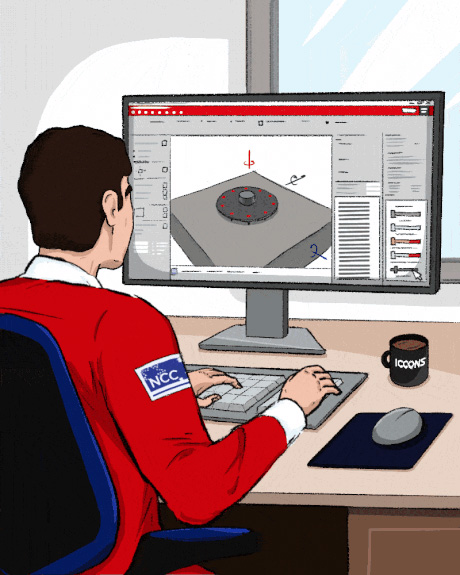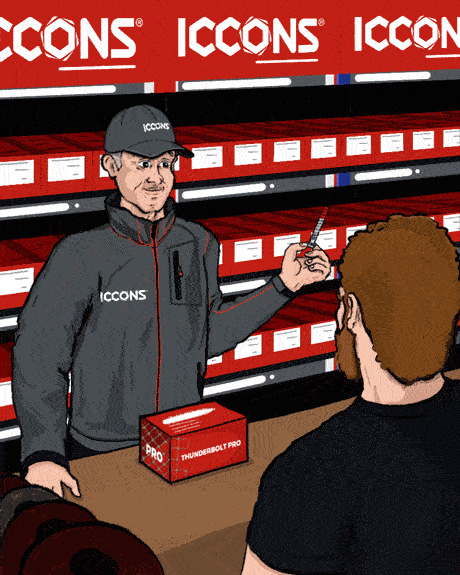If you own or operate a construction supply outlet, you may be eligible to supply ICCONS range of construction fastening supplies at wholesale prices!
- Log In
- Sitebox
- Contact
- Find a dealer
-
Anchoring
Anchoring
- Screw Bolts
- Thru-Bolt Stud Anchors
- FM753 - Heavy Duty Through Anchors
- ATS-EVO Heavy Duty Anchors
- STA-EVO Heavy Duty Anchors
- Hangerz
- Drop-In Anchors
- Suspension and Tie Wire Anchors
- Sleeve Anchors
- Panel Brace Anchors
- Friulsider Nylon Anchors
- Metal - Light Duty
- Nylon - Light Duty
- Plasterboard and Hollow Cavity Wall Anchors
- Plastic Wall Plugs and Spaghetti
- Strike Anchors
-
Pipe Clamps
Anchoring
-
Cast-In Anchors
Anchoring
- Shims and Other
-
Hollow Section Fittings
Anchoring
-
Adhesives
Adhesives
-
Nailing
Nailing
- Rivets
-
Screws
Screws
-
Self Drillers
Screws
- Self Drilling Bugle Head
- STET Aesthetic Architectural Tamper Resistant Screw
- Self Drilling Button Head
- Self Drilling Countersunk Head
- Self Drilling Countersunk Wing
- Self Drilling Flathead
- Self Drilling Hex Head
- Self Drilling Mushroom Head
- Self Drilling Pan Head
- Self Drilling Trade Packs
- Self Drilling Trade Tubs
- Self Drilling Wafer Head
- Self Drillers
- Type 17
- Collated
-
Decking
Screws
- Needle Point
- Chipboard
- Cyclonix
-
Painted Screws
Screws
- Painted - Needle Point Hex Head
- Painted - Self Drilling Button Head
- Painted - Self Drilling Flathead
- Painted - Self Drilling Hex Head
- Painted - Self Drilling Multiseal - 14 Gauge
- Painted - Self Drilling Trade Packs
- Painted - Self Drilling Trade Tubs
- Painted - Self Drilling Wafer Head
- Painted - Type 17 Cyclonix - 14 Gauge
- Painted - Type 17 Hex Head
- Painted Screws
- Muro - Collated Screw Solutions
-
Self Drillers
-
Drilling
Drilling
- Drilling - SDS Plus
- Drilling - SDS Max
- Dustless Drilling
-
Drilling Power Tool Accessories
Drilling
- Countersinking / Pre-Drilling Accessories
- Impact Fastdrive - Bit Holders
- Impact Fastdrive - Bit Kits
- Impact Fastdrive - Insert Bits
- Impact Fastdrive - Nut Setters
- Impact Fastdrive - Power (Double Ended) Bits
- Impact Fastdrive - Power Bits
- Standard Fastdrive - Bit Holders
- Standard Fastdrive - Insert Bits
- Standard Fastdrive - Nut Setters
- Standard Fastdrive - Power Bits
- Impact Sockets
- Drill Attachments
- Tile Bits
- Ratioquick Core Bits and Accessories
- Drilling Power Tool Accessories
- Metal / Wood / Concrete Kits
-
Diamond
Diamond
- Tools
-
Other
Other
- Support & Downloads
- Partners
- Careers
- About
Dealer Login
Expert Tips on Seismic Anchoring: Insights from ICCONS and KUSCH
05 March 2025
Successful construction projects depend on the correct selection of anchors and adherence to proper installation practices, particularly in the context of seismic anchoring. ICCONS and KUSCH, a leading seismic engineering consultancy, have partnered to share insights and promote best practices for installing concrete screw anchors, including ICCONS’ Thunderbolt® PRO, in seismic-rated applications.
About KUSCH
KUSCH, founded in 2013 by Chartered Structural Engineer Martin Kusz, specialises in designing resilient and compliant engineering solutions. Their approach emphasises balancing robustness, efficiency, and sustainability, while prioritising safety and practicality. This collaboration combines ICCONS’ focus on product quality and innovation with KUSCH’s technical expertise to provide practical solutions for even the most complex projects.
Thunderbolt® PRO: A Versatile Solution for Seismic Applications
ICCONS’ Thunderbolt® PRO anchors are an ideal solution for securing threaded rod hangers used in mechanical, electrical, and plumbing (MEP) services. Designed for cracked concrete and rated for seismic loads, these anchors offer several advantages over traditional methods like expansion anchors, including:
- Outstanding performance
- Anchor Versatility: Head styles, sizes and finishes
- Comprehensive approvals
- Faster installation
- Reduced dust, thanks to smaller-diameter holes
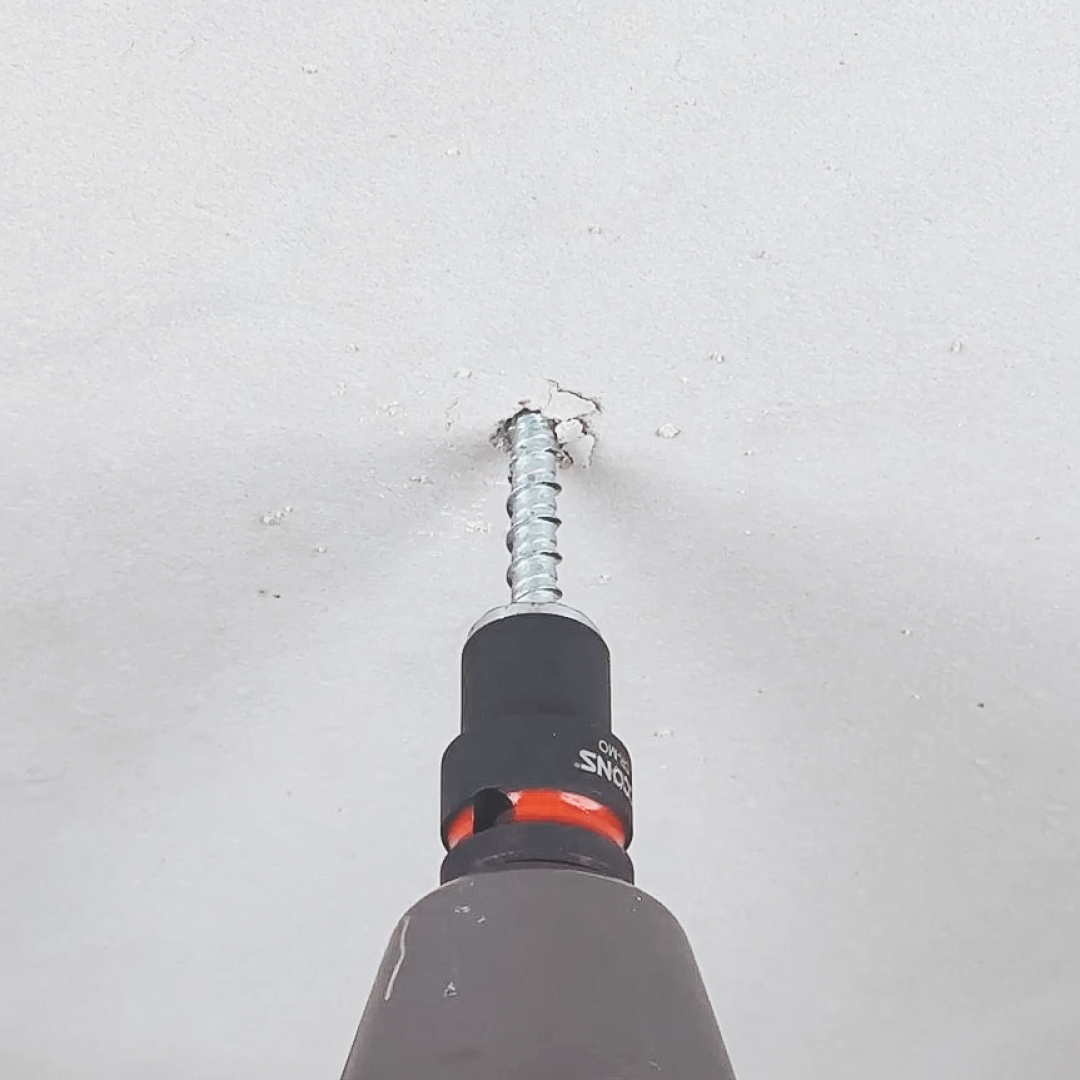
Although these anchors represent significant improvements in efficiency and performance, proper installation remains critical to ensure they perform as specified.
Avoiding Common Installation Errors
In the accompanying video, Gianni from KUSCH outlines key issues that can arise during the installation of concrete screw anchors and offers tips for avoiding them:
- Overdriving the Anchor: Using an impact driver requires caution. For example, the 6mm Thunderbolt® PRO Screw-Bolt has a maximum torque rating of 250Nm. Exceeding this can lead to overdriving, which risks damaging the concrete or compromising the anchor.
- Use a driver with torque control or a lower setting.
- Stop driving immediately when the anchor head contacts the concrete surface.
- Incorrect Hole Depth: Shallow holes weaken the anchor’s hold in the concrete. Drill holes 1 to 2 anchor diameters deeper than the specified anchor length.
- Worn or Incorrect Drill Bits: Worn drill bits can create undersized holes, increasing installation torque and potentially damaging the anchor. To maintain accuracy, adhere to the following best practices.
- Regularly inspect and replace worn bits.
- Use ICCONS’ Raptor drill bits, which feature wear markers to identify when a drill bit has reached the end of its service life.
- Improper Angle of Installation: Anchors installed at an angle other than 90 degrees to the concrete surface may experience bending stresses during tightening, reducing their performance. Always ensure the drill is perpendicular to the surface.
Importance of Proper Installation
Correct installation of seismic-rated anchors ensures they perform as intended under load. When installed properly, ICCONS’ Thunderbolt® PRO anchors provide a reliable, efficient solution for securing threaded rod hangers in seismic environments, delivering both robust performance and impressive load capacities.
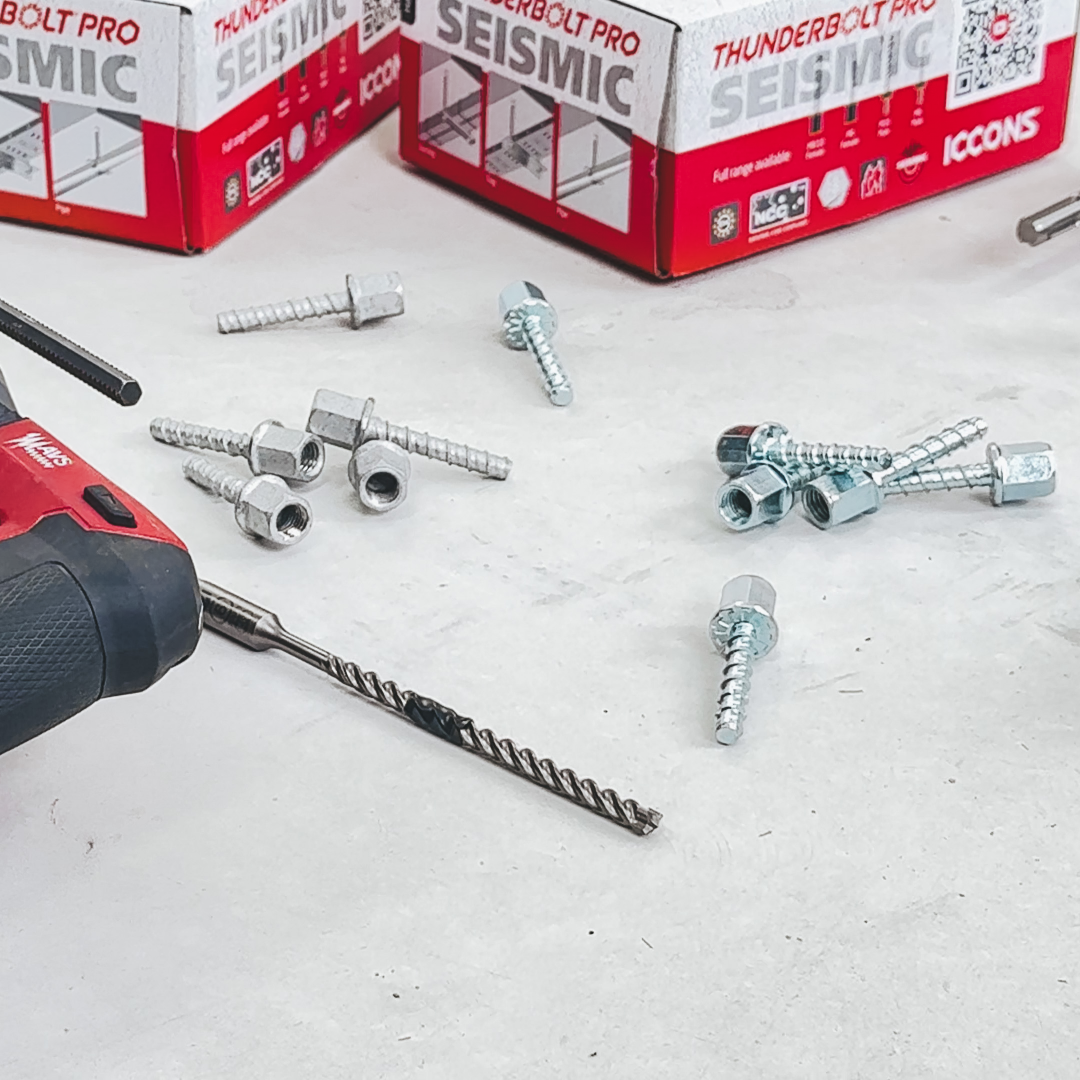
Learn More
For more information about ICCONS’ range of construction fastening systems or expert advice on seismic anchoring, watch the video or contact ICCONS® and KUSCH directly.
Need further support?
Get in touch with our technical experts today
Don't forget to follow us on Facebook, Instagram and LinkedIn to stay in touch with other relevant updates!
Latest articles
-
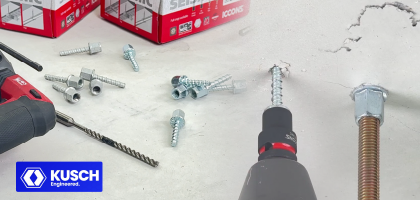 5 March 2025
5 March 2025Expert Tips on Seismic Anchoring: Insights from ICCONS and KUSCH
The importance of proper selection and installation of concrete screw anchors, including ICCONS’ Thunderbolt® PRO, in seismic-rated applications.
Read More -
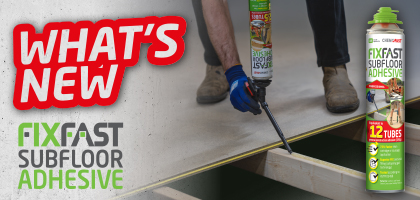 3 February 2025
3 February 2025What's New 🔥 FIXFAST Subfloor Adhesive
ICCONS® introduces FIXFAST Subfloor Adhesive, designed to deliver a durable, long-lasting bond for subfloor installations, reducing the risk of squeaky floors while enhancing overall floor stability.
Read More -
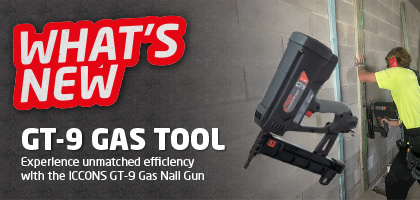 7 January 2025
7 January 2025What's New 🔥 GT-9 Gas Tool
The ideal solution for fastening timber frame to concrete or block. Say goodbye to frequent reloads and costly powder charges - the ICCONS GT-9 redefines framing efficiency.
Read More
